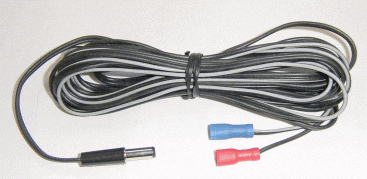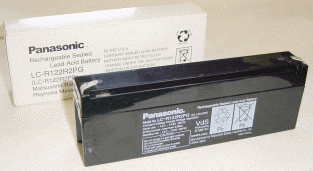 |
Hammerfall DSP System
Introduction RME's Hammerfall DSP System and its CardBus interface, which can operate in virtually any notebook / laptop, finally provide a professional audio port to portable computers. This Tech Info contains explanations for potential problems and their solutions.
Disturbing Digital Noise Ground-loops causing hum are no issue with notebooks. All devices tested by us so far had a switching power supply, that had the ground terminal of the power plug either not connected at all, or in any case not connected to the notebook's ground (connectors, metal parts.) And still we could hear disturbing noises in some situations, that reminded us of ground loops, but sounded rather like 'digital noises'. A closer look showed that the notebook's ground is on free potential due to the virtually ground-free power supplies. The ground is floating between 20 and more than 90 V AC, depending on the notebook. This voltage, measurable with a high-impedance Volt-meter is often not at all high-impedant, but actually quite low-impedant. This causes different effects like little current shocks when touching the Sub-D sockets up to disturbing the analog in- and outputs of connected audio interfaces. Unfortunately, Digiface and Multiface are no exception here. Just imagine your notebook being surrounded by an electrostatic cloud, consisting of disturbances from the switching power supply up to the CPU, just waiting to be deducted to ground. With a low-impedant source of disturbance, there will be a considerable current in the ground connection, which can become audible, if it is an audio connection. For the 90 Volt misconception mentioned above, it was sufficient to put on the headphones and grab the cable firmly, and there was already a slight hum audible in the cans! It goes without saying that also this device carried the popular TÜV-badge (German equivalent to UL, Underwriter's Labs.) Fortunately, this is an isolated case. Designing the Hammerfall DSP System, we have taken care to achieve a high-quality ground causing no modulation within the system, especially within the I/O-box. Outside, we can't do much though. Example Digiface: Is the headphone output being connected to a properly grounded mixer, receiver or even audio measurement system, there will be 112 dBA signal to noise ratio - no sign of disturbing noises. We used standard cable with a length up to 3 meters to verify this. With the Digiface on stage, we had a bad ground connection and/or cable in one case though, so that a noise which could not be overlooked made it necessary to use DI-boxes. DI-boxes contain a small transformer, allowing for a galvanic separation between input and output. Thus there is no current at all, which could flow in the ground connection. By the way, the disturbing noise immediately went away when we pulled the notebook's power plug, which has nothing to do with earth connection in this case, but with disturbances caused by the switching power supply itself. Unfortunately, the notebook's battery was almost empty, otherwise we would have made the gig on battery... Of course the same holds true for the Multiface. If the basic grounding is bad even multiple grounding does not help. An interesting work-around for the stage is directly connecting the notebook to ground, so that the noise voltage is not being deducted mainly over the I/O-box, but already before-hand, at the source so to say. Almost any port can be used as a ground contact, e. g. the COM port, but also the analog ports of the internal sound card.
Headphones and Line Out The headphone connector of the Digiface is basically a low impedance line output of highest quality, that can deliver enough power without distortion also in headphones. It is identical with the analog outputs of the DIGI96/8 PST and PAD. But it is neither balanced nor ground-free. If a monitor output is needed on stage, the analog output can also feed an active monitor speaker. In this case no stereo is needed though. Plugging a mono jack into the stereo jack output is possible in principle. The right channel output is then being short-circuited. This is not a big problem, because:
Usually, DI-boxes lower the output level by 20 to 40 dB, in order to adapt high-level line (or speaker) signals to the sensitive microphone inputs of a stage mixer. This doesn't help, if you still need a line signal. There are also special DI-boxes for this case (1:1), which leave the signal level unchanged.
Power Supply and Mobile Operation with Battery As described above, operating the notebook on a battery instead of a power supply can be advantageous in certain situations. What about the power supply of the HDSP I/O-box then, and why is it necessary at all? We had first planned to realize the HDSP system without external power supply. This proved to be impossible soon though. The Digiface has a power consumption of about 6 Watts. The notebook's CardBus interface delivers only 3.3 Volts at maximally 1 Ampere, translating to 3.3 Watts. We were thus forced to deliver an additional external power supply for notebook operation (AUX.) The situation with desktop PCs proved to be simpler, as their internal 12 V supply can easily be used for the Digiface. In order to make operating the Digiface as simple as possible for the user, it contains a switching regulator of the latest technology, which not only has a high efficiency (> 90%), but also allows for operation with any voltage between 6 and 40 V! In practice, the Digiface accepts any power supply with a voltage between 6 and 40 V DC, no matter, which polarity, and even between 6 and 28 V AC. Given the power supply can deliver the current needed. With such a great compatibility, we could have put any
cheap power adaptor (wall-wart) in the box of the CardBus interface, but
we felt that the HDSP system would then not get the appreciation it deserves.
Therefore, we deliver a high-quality switching power supply, 12 V / 1.25
A, which not only accepts any mains voltage between 100 V and 240 V (usable
world-wide!), but also only weighs 150 g in spite of its high power of 15
Watts! Of course it also passes all audio tests, meaning the effect mentioned
for the notebook power supplies does not occur here.
Copyright © Matthias Carstens, 2001. |
||||||||||
Copyright © 2002 RME. All rights reserved.
RME is a registered trademark. |





